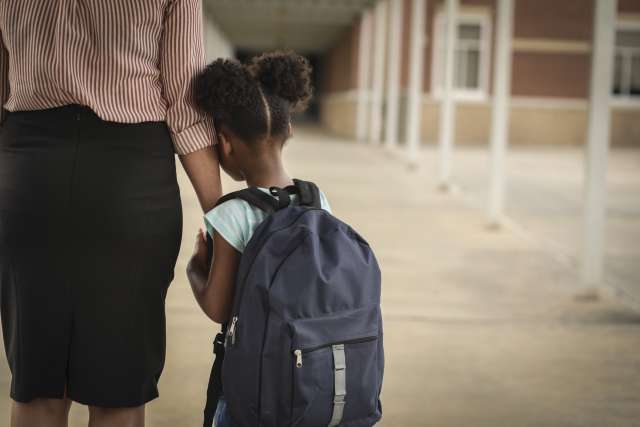For many students, the return to school is challenging. From the anticipation of navigating difficult classes, to the anxieties of making new friends, back-to-school season is full of change and uncertainty.
The UCLA Center for Child Anxiety Resilience Education and Support (CARES) is designed to help students, parents and teachers prepare for this time of year.
“Anxiety is the most common mental health challenge that any age faces,” says Kate Sheehan, LCSW, managing director of CARES. “So, our goal is to help kids, parents, teachers, pediatricians and coaches recognize the symptoms of anxiety earlier and learn strategies to minimize its impact on kids’ futures.”
Training for adults
CARES recently launched a free online training program, located on its learning center, to assist adults in helping students as they face anxiety throughout the school year. Users can access the course using the code “UCLAFREE.”
“Our goal with the course is to empower teachers with information about how anxiety and learning interact and how powerful their role can be as teachers if they bring stress levels down in their classroom,” Sheehan explains.
Developed by CARES in collaboration with the Los Angeles County Department of Mental Health + UCLA Public Partnership for Wellbeing and UCLA Prevention Center of Excellence, the “Managing Anxiety in the Classroom” online course features interactive videos that allow users to follow students through example scenarios, respond in real-time, and witness the outcomes.
In one video, for example, viewers observe a student's anxious response when he is called to give a presentation in front of the class. Users can then explore alternative responses, reinforcing the idea that multiple approaches can effectively manage anxiety.
The interactive course also offers guidance on recognizing various signs of stress. For instance, while some students may display anxiety through irritability, others might exhibit avoidance, such as skipping assignments.
“Kids with anxiety usually have pretty high standards for themselves and don’t want to fail, so often they just won’t approach an assignment,” explains Sheehan. “And so, the goal with the training is to show what this kind of avoidance, or other reactive emotions, may look like, and how to help kids get back on track.
“It’s important for students — even young students — to recognize their strengths and challenges, because then they can ask for the help they actually need,” she adds.
Parents as advocates
In addition to material on the CARES website and social media, the program offers worksheets, exercises, scripts and other resources for schools to share with families.
“Parents can be great advocates for their kids, helping teachers or school administrators understand what their kids’ strengths are,” explains Sheehan. “Some of the skills in our trainings are for parents to learn to bring their anxiety down and put their own worries in perspective, so that they can serve in that coaching role for their kids.
“A new school year brings a lot of uncertainty,” Sheehan says. “And so, we’re hoping to encourage people to learn a little bit about what anxiety can look like in a school setting for elementary, middle school, and high school kids.”
The CARES Center, founded 10 years ago, is directed by UCLA Health providers John Piacentini, PhD, and Patricia Lester, MD.




